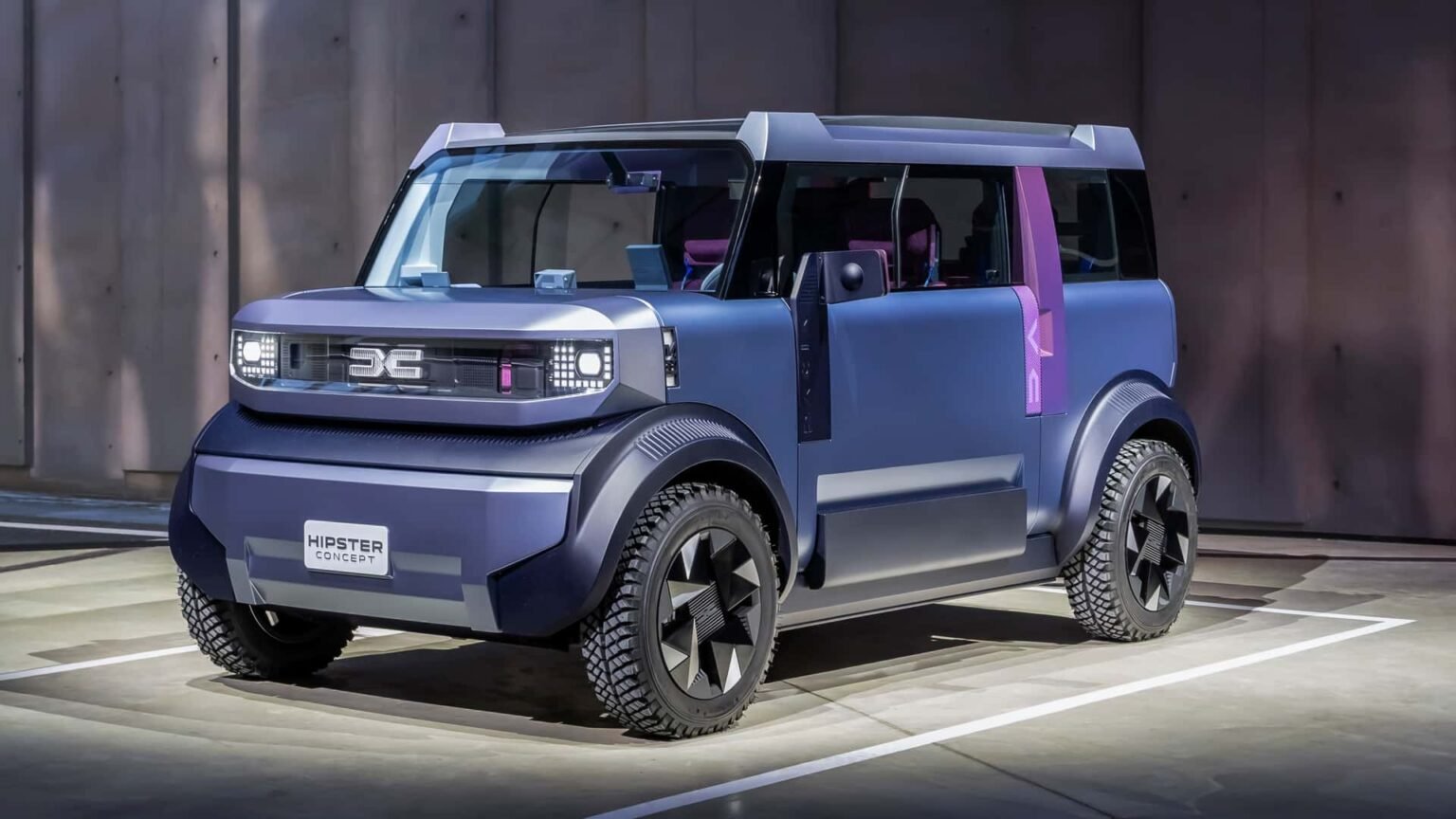From the company that gave us the Duster and Bigster comes the … Hipster. Dacia has unveiled another car with a quirky name, and its ambitious mission is to “invent the popular electric car of tomorrow.” The latest concept from the Renault-owned brand completely ditches swoopy shapes in favor of an ultra-angular design aimed at maximizing interior space.
You can’t immediately tell from these images just how tiny this car is. At only 118.1 inches (three meters) long, it’s significantly shorter than a kei car. Speaking of which, the Hipster evokes a futuristic Honda N-Box but in an even smaller package. It stands just 60 inches (1.53 meters) tall, 61 inches (1.55 meters) wide, and weighs under 1,764 pounds (800 kilograms).
Despite its tiny footprint, Dacia claims the diminutive EV has four proper seats and even a small cargo compartment, though it only holds 2.5 cubic feet (70 liters). Fold the rear bench, however, and capacity jumps to a respectable 17.6 cubic feet (500 liters).
The battery’s capacity isn’t specified, but given the car’s petite size and impressively low weight, the Hipster clearly isn’t lugging around a hefty pack. Dacia says there’s enough range for everyday use, requiring just two recharges per week.
Photo by: Dacia
Like Dacia’s production cars, the cube-like concept keeps costs firmly in check. For instance, the square taillights are mounted behind the tailgate’s window, eliminating the need for separate glass. And just like in a Porsche 911 GT3 RS, the door handles are replaced with fabric straps because they’re lighter and cheaper.
If you’re nostalgic for front benches, the Hipster has one. A mesh fabric helps further cut costs, as do the separate headrests suspended above both front and rear seats. Despite the minimalist interior, Dacia hasn’t entirely skimped on safety, fitting airbags for the driver and front passenger.
In addition to its roomy cabin relative to its size, the Hipster is impressively practical. There are 11 anchor points scattered throughout the interior for attaching accessories such as cup holders, extra lights, a portable Bluetooth speaker, or even armrests.
112
Source: Dacia
As spartan and funky as it may look, the Hipster embodies an intriguing idea. If the concept of “bare necessities” were turned into a car, this would be it: everything you need and nothing that adds cost, weight, or complexity. It’s essentially a step above a quadricycle, a European spin on the kei car philosophy.
The concept’s debut comes as the European Union considers creating separate regulations for ultra-compact EVs. These vehicles wouldn’t need to meet as many requirements as standard electric cars, reducing manufacturing costs. The resulting savings could be passed on to customers, while automakers could still profit, even when selling a sub-€20,000 EV.
Read the full article here


